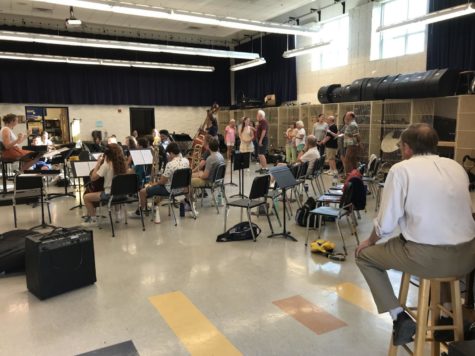Movie Review: Joker
The new movie “Joker” has received mixed feedback. Some people absolutely love it and some don’t enjoy it the slightest. The movie explores various controversial themes and details the backstory of DC Comic’s most known villain who is also a top enemy of Batman. This movie gives insight as to why the conflict between Batman and Joker began and how Bruce Wayne, or Batman, lost his parents and his reasons for his hatred of the Joker, along with the reasons as to why the Joker, or Arthur Fleck, hated Bruce Wayne. Be warned, this entire review is a spoiler of the movie.
The movie starts off with Arthur at his job as a clown. We see soon that his look inspires a movement for all lower-class citizens of Gotham. He is seen as a weird ghastly person due to his chronic laughing condition, which causes uncontrollable laughter due to a brain injury. He is looked down upon, thus causing his boss to not believe him in occurring incidents, causing him to eventually be fired for bringing a gun to a kid’s hospital. This scene brings up the issue of how the “general” public treats mentally ill people. Most tend to treat them poorly, and in this movie, one managed to get Arthur fired simply by giving him the gun.
Throughout the movie, the scenes where Arthur laughs uncontrollably demonstrate the biases people have towards the abnormal, seeing them as unsafe and dangerous, like when the mother on the bus “protected” her son from Arthur joking around with him, causing his uncontrollable laughter and following came the looks of disapproval and unease from the occupants on the bus. Joker demonstrates the overall occurrences of mental illnesses and the public and how these two interact. The intricate plot in this movie allows it to touch on such sensitive subjects, with reasons for everything while making the audience think of what they see in the world, which has caused some of the backlash in response to the movie.
Furthermore, any scene with mental illness went into depth, showing how his mental disability came to be, from his child abuse and neglect. This movie shows the consequences of those forgotten after their childhood abuse and eventual possible mental disabilities. Disabilities such as DID (dissociative identity disorder) can result from childhood abuse, but this seems to be neglected in society when those with this illness are seen as insane or psychopaths. Along with this, the film shows the consequences of the lack of helpful medications and the cutting off of public mental health funding. Arthur is seen to imagine a woman as his lover and spirals out of control into the villain that murders a popular talk show host on national television after confessing to his crimes and gloating about the murders that started the uprising of the lower-class majority.
Continuing in the film, the movie brings up controversies such as “revenge killings” when Arthur kills his mother for causing his current mental condition (she stood by and let a boyfriend beat him then beat her) and lying to him about being his mother in the first place and who his father supposedly was. Additionally, he kills the man who gave him the gun to get him fired, brutally so in front of the other man who worked with Arthur and the now dead man, but he is let go. This brings up the reasoning behind revenge killing and if they are “just” killings, which can touch into different moral views. This movie is very graphic and includes details that may make some viewers uncomfortable.
Throughout the film, the importance of general welfare is a central theme, as most of the lower-class citizens are the majority population. This relates to the Revolutionary War and the time leading up to this revolution. The majority of the U.S population was educationally and economically disadvantaged, and only a small amount of citizens held political power. These circumstances led to a revolt, similar to the occurrence in Gotham, as the lower-classes retook the name “clowns” and made it their own (similar to some African American communities with the n-word), proceeding to revolt and free themselves from the tyranny of their “king” (or Thomas Wayne). This develops the importance of the general welfare of everyone and how the lower-class citizens should be prioritized and treated equally compared to the wealthy unless a violent revolt is desired.
Also, there are recurring political themes in the movie. With the deaths of the rich “men” on the train, the poorer citizens see this as a call to action to continue killing the rich, while the rich take to the moral high ground and make the mistake of calling those in agreement “clowns,” after the killer, Arthur, shot these “men” with clown makeup on.
Overall, this movie touches on very sensitive topics in an intricate plot that demonstrates the importance of general welfare and politics in society and how these elements are vital to the survival of the overall population. If you are interested in plots with twists and films that push social boundaries, this is the movie for you.





